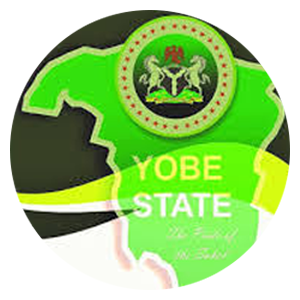
Yobe

Project Coordinator
Yobe ACReSAL
Yobe State is among the 36 states of Nigeria and covers 47,153 km2 is Latitude 10.578- 13.3770N and Longitude 9.654-12.6890E. Yobe State’s population was 2,321,339 million at the last (2006) census. In the study area, desertification and drought are the main environmental issues, and the region has long dry seasons, recurrent drought, skeletal soil, and sparse vegetation cover. Yobe State shares boundaries from the west with Jigawa and Bauchi States, Gombe and Borno States to the southeast, and an international boundary of 323 km with the Niger Republic to the north. Yobe State has 17 Local Government Areas (LGAs) distributed within three geographic regions (South, East, and North). The LGAs are Bade, Bursari, Damaturu, Fika, Fune, Geidam, Gulani, Jakusko, Karasuwa, Nangere, Nguru, Potiskum, Tarmuwa, Yunusari, Gujba, Machina and Yusufari
CLIMATE AND VEGETATION
Yobe State is situated in the sudano-sahelian vegetation zone of the country, which is characterized by a hot and dry climate for the most part of the year. The hottest months of the year in the state are March to May, with temperatures ranging from 39 – 440C. In contrast to the thick vegetation forest of the coastal states in Nigeria, the vegetation of Yobe State is generally Savannah Grassland. Grasses, sparse dwarf trees, and shrubs are the most common features of the state.
Yobe State has a wide range of climate variations. It has both warm and cool days in the rainy season. The state is heavily influenced by the relatively stable tropical continental air mass from the Sahara Desert, bringing the dusty northeast winds (also known as Harmattan). The dryness lasts seven months with severe cold and hazy harmattan wind from the Sahara Desert around November and lasts until February. The hot climate sets in around March and lasts till around May/June when the rains set in. The rainy season is usually short, not exceeding 3 – 4 months. The mean annual rainfall for the state is between 180 mm and 240 mm in the southern and northern 180 and 185mm parts of the state, respectively. The mean annual rainfall can be erratic and epileptic, resulting in frequent droughts. The state has thus been witnessing periodic occurrences of intense drought since the 1950s, which have remained persistent since the 1960s.


